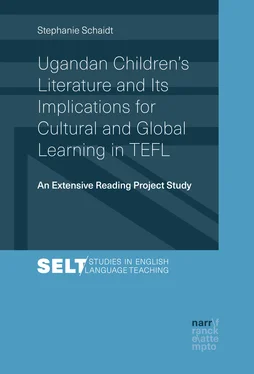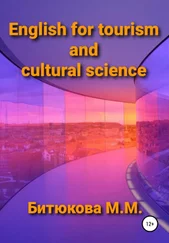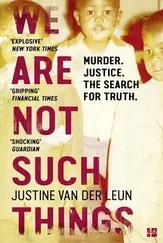Folktales, however, also require critical reading. In the opinion of Magos (2012, p. 195), “no one can dispute the existence of strong stereotypes as a characteristic of their content”. Stereotypes that are portrayed in the tales may be used as starting points to discuss processes of ‘othering’.
The analysis of stereotypes for the ‘other’ which are conveyed through folktales may help students understand the causes and means through which stereotypes are formed, and reflect on those stereotypes which affect, often subconsciously, their views and attitudes. Through such a procedure, folktale stereotypes can function as an effective teaching tool for the identification and combating of stereotypes. (Ibid., p. 196)
Moreover, Ugandan children’s fiction in a realistic mode promises to be productive in the context of cultural and global learning in the EFL classroom. Many issues of growing up are universal but young people in Uganda also encounter joys and challenges particular to their situation. Reading about young people from different backgrounds, from urban and rural areas, boys and girls with different aspirations and dreams, enables students in Germany to get a broader picture of adolescence in an African country. The Ugandan writer and editor Julius Ocwinyo points out in an interview that he believes reading Ugandan children’s fiction provides children in Germany with counter-representations of what they usually read:
I think, it would give them [children in Germany, my note] an insight in what the world here is like but also in what we are interested in, what our concerns are and also what we actually like to read about. I find it particularly annoying that in the West there is no balance in the presentation of African countries. I have travelled outside the country and one of the first questions I have always been asked is ‘Where you live, are there a lot of elephants and lions?’ I have never seen a lion myself. In many Western children’s books about Africa, however, Africa is presented like that. A lot of things are wrong, actually.1
Many of the Ugandan narratives deal with topics that are frequently referred to as ‘global’ in foreign language didactics (see Chapter 2.8): HIV/AIDS, gender issues and child soldiers. Usually students are exposed to information on these topics only from Western perspectives. In the news, students are, for example, confronted with reports about the devastating effects of the HIV/AIDS epidemic in African countries and the use of children in wars in Africa. Rarely, however, do they hear from those people who are affected by the epidemic or war directly. The fiction that has been selected for integration in this study addresses these topics from a Ugandan perspective. It answers questions children in Uganda are interested in and shows how young people in Uganda deal with these issues. Furthermore, the variety of different texts illustrates that there is also no homogenous Ugandan discourse but that it is multifaceted instead. With reference to one of the so called ‘global topics’, HIV/AIDS, Downing (2005, p. 29) remarks that
AIDS is one reason the West pays attention to Africa, but that attention is in the form of rescuing, not learning. The West doesn’t seem to realize that there are African discourses of AIDS fundamentally different from the Western discourses.
Reading Ugandan fiction on topics such as HIV/AIDS, child soldiers and gender issues may contribute to a shift of focus and hence foster students’ learning process.
5 Research Design and Methodology
Having given an overview of the status quo in the relevant fields of foreign language didactics and an introduction to the literary basis, i.e. Ugandan children’s fiction, the following chapter focuses on the research design and methodology of the empirical study. It gives insights into the research questions, sample, instrumentation, procedure of data collection and method for data analysis.
5.1 Previous Studies and Focus of the Present Study
Until today only a small number of empirical studies in the field of literary didactics in Germany have been conducted which give insights into cultural learning. The three major studies (Burwitz-Melzer, 2003; Fäcke, 2006; Freitag-Hild, 2010a), all look into the mental processes of students, when engaging with literary texts in the foreign language classroom. Since they offer important contributions to the field to which the present study intends to connect, they require further elaboration at this point.
Burwitz-Melzer (2003) is particularly interested in getting insights into the suitability of certain texts, text introduction methods and task types for the understanding of the other ( Fremdverstehen ) and intercultural learning. In her study, she combines teachers’ questionnaires, observation of lessons and retrospective interviews with teachers and students about recorded lessons. As a result of her study, she comes up with a task typology that may be applied in the foreign language classroom. Moreover, she finds that a reflection/meta-phase is of particular importance in the context of intercultural learning.
Freitag-Hild (2010a) takes a similar approach, both concerning the theoretical background and the research methodology. Her research aims at finding out to what extent selected literary texts and task types trigger inter- and transcultural learning and comprehension processes. Taking also transcultural learning into account, Freitag-Hild’s study is based on a wider concept of culture than that of Burwitz-Melzer, yet a central element of her analysis is to look into Perspektivenübernahm e [adoption of perspective] by the students. This indicates that her research may also be ascribed to a rather hermeneutic approach to understanding otherness. Similarly to Burwitz-Melzer, Freitag-Hild also observes lessons, analyses learner products and conducts retrospective interviews with the students and teachers about videotaped lessons. In her results, she points out that the texts offered various possibilities for identification and changes of perspectives for the students beyond cultural borders. She proposes several teaching principles (“ Multiperspektivität, Dialogizität und Reflexivität [multiperspectivity, dialogue and reflexitivity]” (ibid., pp. 60–62)) and a task typology for inter- and transcultural learning with fiction in the EFL classroom.
Fäcke (2006) analyses the mental processes of ten primarily mono- or biculturally socialised young adults engaging with a literary text they are reading in their French or Spanish class. She gains insight into these processes by asking the participants to think aloud, analysing their reading diary entries and interviewing them. By focusing on the subject, taking into account the various contexts students draw on in their meaning creation process and putting particular emphasis on their socialisation, she argues from a deconstructivist perspective. She assigns the learners’ responses to different stages of (transcultural) understanding/openness. The results of her study show that the primarily mono- or bicultural socialisation of the students plays an important role in how they deal with the text. In her study, the references of students with a bicultural background to their own culture and ethnicity differ to those of students who are primarily monoculturally socialised (ibid., pp. 213–214).
The present study intends to add to the field of literary didactics in the context of cultural and global learning in various ways. For one, the focus on Ugandan children’s fiction contributes to an extension of the canon as urged by various scholars. In the manner of the empire writing back to the centre (see The Empire Writes Back by Ashcroft, Griffiths, & Tiffin, 1994), these texts are set against a Eurocentric, Western perspective on an African country. They give insights, for example, into Ugandan perspectives on certain ‘global’ issues such as HIV/AIDS (see Chapters 4.3 and 4.4.3). Referring to Kenyan and Ugandan women’s literatures, Strauhs (2012, pp. 93–94) states: “To cultural outsiders, studying these contemporary literatures can contribute to a sound understanding of the continent and its peoples in times when the image of Africa is still conflicting”. As is illustrated in the quote, literature by African writers may be ascribed the potential to deconstruct existing negative and one-sided perspectives on the African continent. This is particularly important for TEFL since African countries are still widely ignored in this context. Curricula and school books hardly touch upon content related to the African continent. Amongst students in Germany a rather limited, one-sided and negative image of Africa prevails (Reichart-Burikukiye, 2001; Schmidt-Wulffen, 1998; Tröger, 1993). Integrating texts of the type analysed in Chapter 4, may meet some of the demands that are raised by scholars in the field of postmodernism and postcolonialism. It may also encourage teachers and educators to make use of children’s fiction of various origins in their classroom.
Читать дальше












